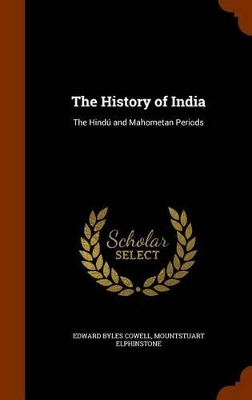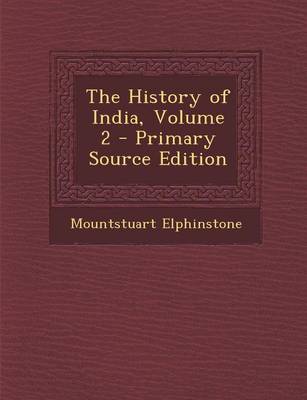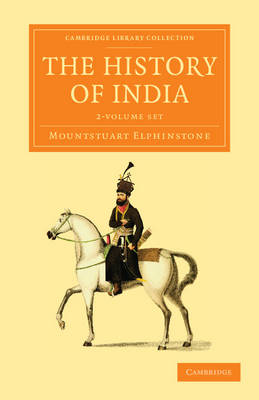Cambridge Library Collection - Perspectives from the Royal Asiatic Society
1 primary work • 4 total works
Volume 2
Appointed through family influence to the East India Company, Mountstuart Elphinstone (1779-1859) arrived on the subcontinent in 1796, quickly learning Persian and developing an interest in Indian civilisation. After postings in Benares, Afghanistan and Poona, he became governor in 1819 of the recently acquired territory that became known as the Bombay Presidency, where he remained until his resignation in 1827. On his return to England, he devoted much of his time to writing and was a founder member of the Royal Geographical Society. This two-volume history, based on a range of Indian sources and first published in 1841, is infused with his lifelong understanding of Indian culture, science and philosophy. A scholarly refutation of James Mill's History, it was the most popular work of its kind among the early Victorian public. Volume 2 covers the period from the thirteenth century to the demise of the Mogul empire in the mid-eighteenth century.
Appointed through family influence to the East India Company, Mountstuart Elphinstone (1779-1859) arrived on the subcontinent in 1796, quickly learning Persian and developing an interest in Indian civilisation. After postings in Benares, Afghanistan and Poona, he became governor in 1819 of the recently acquired territory that became known as the Bombay Presidency, where he remained until his resignation in 1827. On his return to England, he devoted much of his time to writing and was a founder member of the Royal Geographical Society. This two-volume history, based on a range of Indian sources and first published in 1841, is infused with his lifelong understanding of Indian culture, science and philosophy. A scholarly refutation of James Mill's History, it was the most popular work of its kind among the early Victorian public. Volume 1 contains a topographical introduction and covers the history of the Indian subcontinent to the thirteenth century.
Appointed through family influence to the East India Company, Mountstuart Elphinstone (1779-1859) arrived on the subcontinent in 1796, quickly learning Persian and developing an interest in Indian civilisation. After postings in Benares, Afghanistan and Poona, he became governor in 1819 of the recently acquired territory that became known as the Bombay Presidency, where he remained until his resignation in 1827. On his return to England, he devoted much of his time to writing and was a founder member of the Royal Geographical Society. This two-volume history, based on a range of Indian sources and first published in 1841, is infused with his lifelong understanding of Indian culture, science and philosophy. A scholarly refutation of James Mill's History, it was the most popular work of its kind among the early Victorian public. Volume 2 covers the period from the thirteenth century to the demise of the Mogul empire in the mid-eighteenth century.
Appointed through family influence to the East India Company, Mountstuart Elphinstone (1779-1859) arrived on the subcontinent in 1796, quickly learning Persian and developing an interest in Indian civilisation. After postings in Benares, Afghanistan and Poona, he became governor in 1819 of the recently acquired territory that became known as the Bombay Presidency, where he remained until his resignation in 1827. On his return to England, he devoted much of his time to writing and was a founder member of the Royal Geographical Society. This two-volume history, based on a range of Indian sources and first published in 1841, is infused with his lifelong understanding of Indian culture, science and philosophy. A scholarly refutation of James Mill's History, it was the most popular work of its kind among the early Victorian public. Volume 1 takes the history of the subcontinent up to the thirteenth century, while Volume 2 continues to the demise of the Mogul empire in the mid-eighteenth century.



